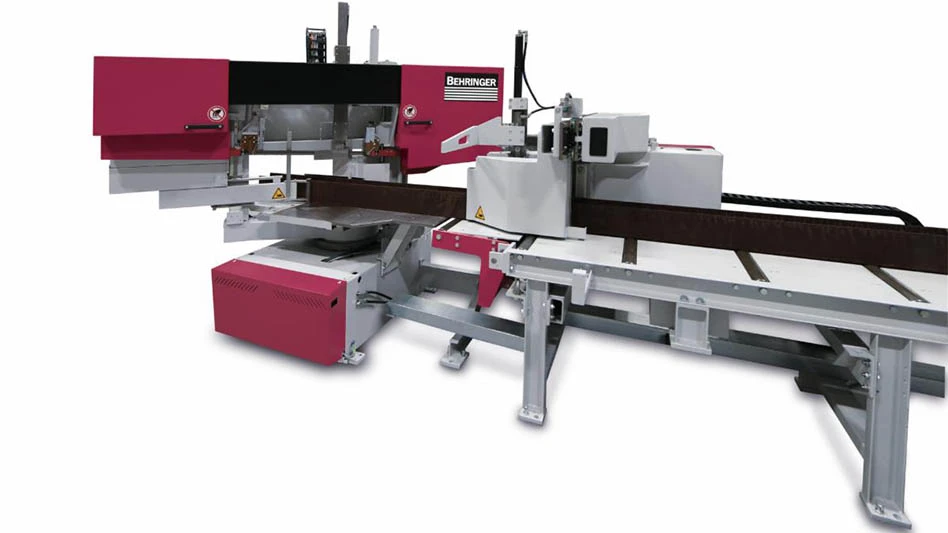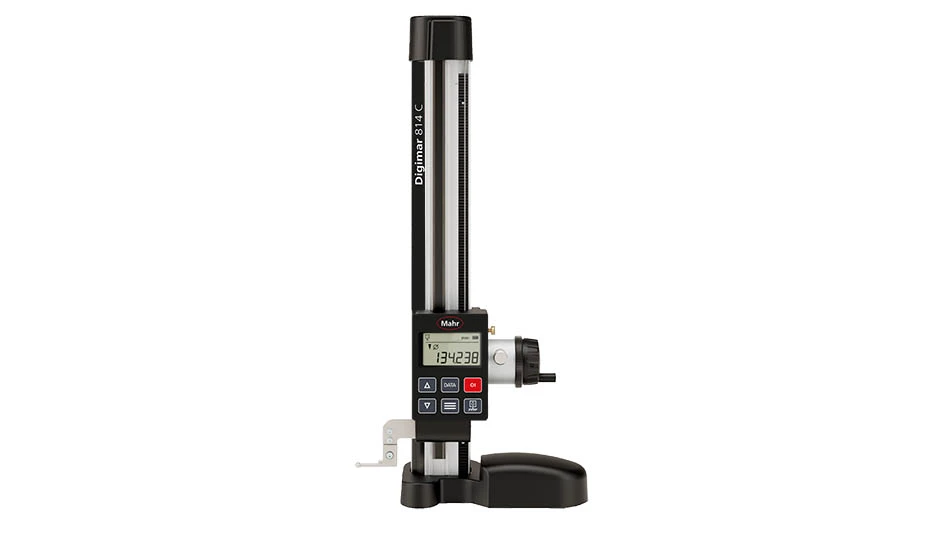
Wazer
The aerospace industry is at the cutting edge of design, materials, and manufacturing. It requires vision and courage, plus engineers and manufacturers doing the hard work of designing, prototyping, testing, and iteration. Prototyping means rapid iteration to validate and de-risk new designs. In the past, this meant leveraging a detached team of modelers and machine operators with a corresponding set of specialized, complex equipment.
Increasingly, companies are exploring a better option for producing prototypes - they’re bringing new digital manufacturing tools into the engineering department itself. These tools allow engineers to make prototypes immediately and locally, without having to outsource or interrupt the production floor.
This equipment includes 3D printers, CNC machines, desktop laser cutters, and most recently, desktop waterjets. Desktop abrasive waterjet cutting is one process among a growing number of technologies in a category known as digital desktop manufacturing tools. The concept has created new possibilities for aerospace designers to dramatically reduce the time from an initial design idea to a final product. Digital desktop manufacturing began over a decade ago with desktop 3D printers. These are great at creating complex parts in various plastic materials. They were followed by desktop laser cutters which can create 2D parts in soft, thin materials such as wood and plastic. These technologies empowered engineers to prototype waterjet cutters recently entered the market, finally allowing engineers to produce precision parts in any material, including metals, soft and hard plastics, glass, carbon fiber, or any composite.
Waterjets cut an array of materials by focusing ultrahigh-pressure water and abrasive particles into a nozzle and blasting the slurry at the workpiece. Since all materials erode, waterjets produce precise prototype parts with a great surface finish in many materials that 3D printers, lasers, or CNC machines cannot handle. As waterjets use a cold cutting process, they are safer because they do not create dangerous fumes or dust, and also prevent heat damage or distortion to the parts being cut.
These tools are now enabling engineers in aerospace to produce prototypes in any material, in-house, and at speeds and iteration cycles never before possible.
Bringing Prototype Production to the Engineering Department
Moving the prototype production from a separate model shop to being with the engineers can reduce the time and risk of error involved in both prototype creation and iteration.
For example, the internal R&D team at Applied Systems Engineering in Florida is developing combat systems for the USAF and the USN. They have a number of challenges, including speeding the turnaround for parts and fixtures, reducing the cost for these quick timelines, protection of sensitive IP, and meeting government material and process certification specifications.
The company was manually cutting carbon fiber drone structures, aluminum missile wing spars and fixtures, and acrylics for enclosures and cover plates, operations that required hand-offs from engineering to skilled operators for each item and iteration.

To improve the process, they brought in digital desktop manufacturing tools, like WAZER, a new desktop waterjet cutting machine. Kellan Cannon, an Electronic Technician, said, “We specifically bought a waterjet to create one-offs and rapid prototypes more affordably and efficiently. The plug-and-play nature of this machine is important, because it is easy to use and there is no need for another trained person to operate it.”
Waterjets are being used in the design and prototyping phase, as well as for producing some end-use parts designed for harsh wartime conditions. Because these tools allow engineers to go from design drawings to manufacturing g-code cutting files, the engineers can now envision, produce, and iterate parts themselves, instead of handing-off designs and waiting for production shops to return prototype parts.
By being more involved in the prototype production, engineers get quicker and better feedback that improves the performance of the end product.
Achieving Greater Prototype Iteration Speed
It is very common for multiple prototype iterations in order to fine-tune and de-risk product designs. This Is especially true in aeronautics and aerospace. However, repeated prototype cycles add time, expense and risk of error, which can undermine a project.
By bringing the prototype production in-house, aerospace companies can actually accelerate their prototype iteration and also perform micro-iterations to test specific product variations.
Howe Industries is developing a unique water-based propulsion system for small research spacecraft. Their upcoming commercial release needs an extreme frequency of different prototypes. Jack Miller, lead engineer for the research and development, said that the numerous design cycles require that “we often iterate multiple times a day on the same part,” and “the pace for testing and production is greatly accelerated.”
This pace of prototyping could be achieved only with in-house resources. A desktop waterjet was installed to precisely fabricate prototype parts in lightweight and sometimes exotic materials.
Since waterjets can cut any material, in a typical day, the machine at Howe Industries may be used to cut aluminum parts for satellite propulsion, test stands in carbon fiber, or even ceramics and borosilicate glass for an optical system. The inhouse digital desktop manufacturing tools, including the waterjet are crucial to their rapid prototyping of space components. The engineering team went from waiting for outside vendors to deliver costly and time-consuming prototypes, to a much faster in-house process that allows them to iterate as necessary to optimize their designs.
Keeping Complex Production on Schedule
Every aerospace mission is built on thousands of interconnected components, each of which needs to be designed and tested as a separate unit, as well as in end-to-end system testing. Specification changes to one component can affect other components, requiring new cycles of design and testing. Or when components are late due to outsourcing delays or interruptions in supply chains for materials or fabrication, it can affect other assemblies and the entire mission.
With new desktop digital manufacturing, companies can move the design, prototyping and testing in-house and into the engineering shop to help complex projects stay integrated and stay on time. Additionally, companies may do low-volume production in-house, via these same desktop digital manufacturing tools.
One company that supplies NASA components has embraced digital desktop manufacturing for some of their finished production. They brought in a waterjet to facilitate lean production for parts in aluminum, titanium, stainless steel, various composites and polymers.

The company was able to meet a tight project schedule by making parts in-house without supply chain issues or spending time getting competitive quotes. Unlike traditional manufacturing, waterjets and other new digital desktop manufacturing equipment do not require expensive tooling or certified operators. As desktop machines, they are also much more affordable than traditional waterjets, the company said that, “The machine paid for itself in just 2 or 3 months.”
Preparing the Aeronautical Engineers of the Future
Today’s engineering students will be designing and building the aeronautical systems that will fly in the future. These students, and their faculty, are eager for hands-on projects that will expose students to the

UC Boulder.
new technologies and the actual materials that they will use when they graduate. Similarly, the aerospace industry needs new graduates who are trained and prepared in school, to tackle real-world problems.
Digital desktop manufacturing tools, such as 3D Printers and waterjets help schools provide students with realistic assignments and project-based learning. Because they are affordable and compact, schools can install multiple manufacturing machines in each lab so that more students can work on projects simultaneously. Plus, unlike traditional manufacturing machines, this equipment is safer and allows students to experiment with any material, from lightweight metals to composites. Desktop waterjet machines are typically affordable and also much smaller than traditional waterjets, allowing them to fit into the laboratory environment.
University of Colorado Boulder installed a waterjet machine in its new Smead Aerospace Engineering building. Matt Rhode is the Machine Shop Manager there, and said, “The students come up with everything … so we need to be able to meet that need.”
Prototyping the Future of Aerospace, one Part at a Time
The aerospace industry is dynamic, continually stretching boundaries by people with bold visions and designs. To become reality, these bold ideas require modern manufacturing systems and complex materials that allow engineers to conceive an idea and see it get built, tested and perhaps eventually fly.
Digital desktop manufacturing equipment, from 3D Printers to desktop lasers and affordable waterjets are meeting this challenge. With these tools engineers can design a part, fabricate and test it the same day. They can reduce cycle times to iterate and refine products, driving superior performance of the end product, and they can produce in-house to keep complex projects on schedule and on budget.
The future of aerospace is being refined every day, with help from new digital desktop fabrication technologies such as desktop waterjets.
Latest from Aerospace Manufacturing and Design
- Gleason Corp. acquires the Intra Group of Companies
- Thread milling cutter reduces cutting pressure, vibration
- Malaysia Aviation Group orders 20 more Airbus A330neo widebodies
- More displacement from space-tested piezo actuators
- Textron Aviation to bring its largest-ever lineup to 2025 EAA AirVenture
- Qualified materials for 3D-printing mission-critical applications
- #69 Manufacturing Matters - Shopfloor Connectivity Roundtable with Renishaw and SMW Autoblok
- Demystifying Controlled Unclassified Information (CUI)





